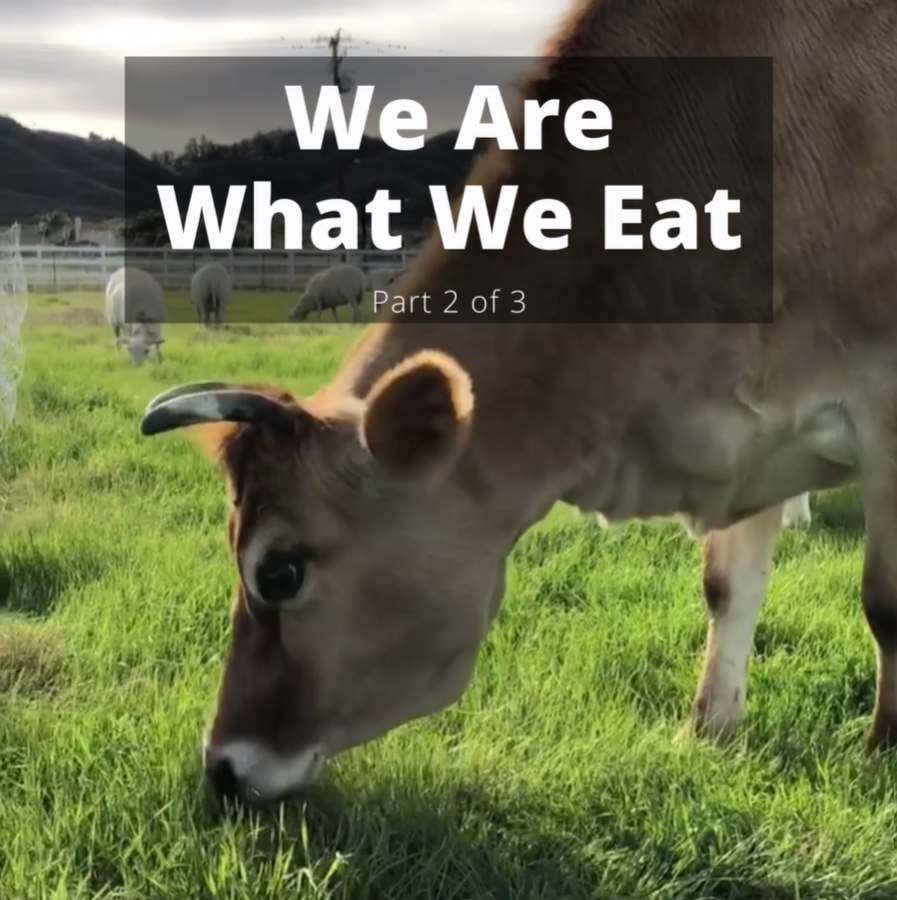
We Are What We Eat - Part 2 of 3
"We Are What We Eat" - Part 2
Our cattle and sheep are strictly pasture raised, feeding off the land of the farm as we rotate them from patch to patch. They are never provided any additional or supplemental feed.
But why?
Both cattle and sheep are ruminant animals. A ruminant animal has four different compartments in their stomach, unlike the monogastric animals we mentioned in part one- like chickens. Other ruminant animals include buffalo, deer, elk, camels and even giraffes!
Ruminant animals, because of their unique digestive system, can process grass and other vegetation containing cellulose that us humans and other monogastric animals cannot digest. In fact, humans cannot consume most of the plants grown. Most of the time, of the plants we can consume, there is only a small part of the plant that is edible. The rest is discarded, often referred to as by-product. But ruminant animals can digest them and turn the energy into high quality protein through the meat and dairy we source from them.
How cool is that? They can take something that otherwise is useless and turn it into sustainable energy for us.
So how do the cows and sheep convert the grass and vegetation? When they eat grass, they don’t actually chew it all the way. They swallow it and it travels to the first compartment of their stomach, called the rumen (hence the term ruminant animals). The grass is then broken down by the microbes that naturally live in the rumen and turned into “cud”. The cud is then voluntarily “un-swallowed” with use of the 2nd compartment, the reticulum, and further chewed on by the animal. The rumen is quite literally the largest role in the animal’s digestion. In fact, the rumen of a mature cow can hold up to approximately 49 gallons!
After the rumen does its part, and the animals chew the cud, the food will continue through the other two compartments called the omasum and abomasum for further digestion and absorption of the nutrients.
All of this is to explain that ruminant animals, and their unique digestive systems, were never intended to eat grains (especially GMO corn). While many claim that these animals can adapt to an alternative diet, we don’t believe they should have to, when a perfect, natural diet is so easily and readily available through the regenerative farming model. One that is a higher, more nutrient-dense diet, than that of grain.
It’s because of the natural, grass fed diet that gives you some seriously tasty meat, with zero compromises. Primal Pastures’ beef and lamb are always 100% pasture raised, grass fed, and grass finished.
It’s a lot of information to digest (punny) and we are only scratching the surface. But we want you to rest assured that when you purchase meat from Primal Pastures, you can buy with confidence knowing you truly are getting the best product out there!


0 comments